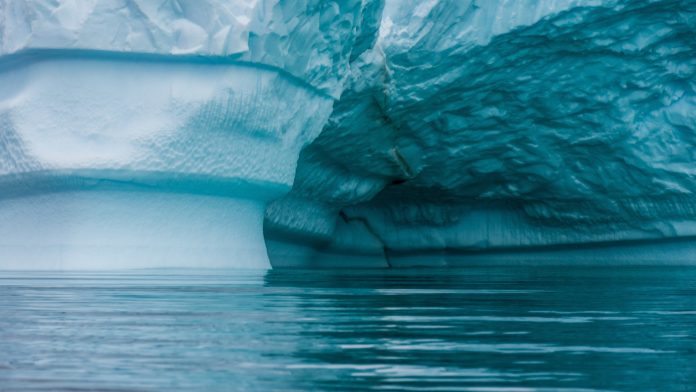The exploration of new frontiers in critical mineral mining – specifically the oceans, the poles, and space – could radically reshape global supply chains with profound geopolitical and economic consequences.
Nine years have passed since the signing of the Paris Agreement at COP21 in December 2015, which set the ambitious goal of limiting global temperature rise to below 2°C above pre-industrial levels by the end of the century. Since then, nations have scrambled to secure the critical minerals necessary for renewable energy technologies and electric vehicles (EVs) required to meet climate goals. The International Energy Agency (IEA) forecasts that by 2030, global investments in renewable energy will need to increase by $5tr annually to stay on track with net-zero emissions. By the same year, 70% of global electricity generation must come from wind and solar, and 60% of global car sales must be electric.
However, achieving these ambitious targets will be hampered by one key challenge: ensuring a secure and reliable supply of critical minerals like lithium, cobalt, copper, nickel, and rare earth elements, which are essential for building the necessary technologies. As global demand for these minerals increases, the traditional supply chains, which are concentrated in a few countries, face growing risks of disruption. In the coming years, three emerging frontiers – the deep sea, the poles, and space – may either alleviate or exacerbate these challenges, with significant geopolitical and strategic consequences.
Securing critical mineral supply chains
To meet net-zero goals, governments are acting boldly to secure their critical mineral supply chains. For example, the UK’s new Labour government recently introduced a £7.3bn National Wealth Fund, designed to attract private investment into clean energy projects and foster the development of new gigafactories for the automotive industry. This ambitious strategy aims to stimulate job creation, innovation, and infrastructure development across the UK’s clean energy and electric vehicle sectors.
China remains the dominant player in the global critical minerals market, particularly in the electric vehicle (EV) and battery supply chains. In 2023, BYD manufactured three million EVs, more than twice the number produced by Tesla. Meanwhile, the United States is diversifying its supply chain through the Minerals Security Partnership (MSP). The US-founded MSP is a strategic alternative to China’s dominance, but competition between these two global mineral powerhouses remains fierce and is likely to continue for the foreseeable future.
Governments are increasingly focused on mitigating the risks of disruption to critical mineral supply chains, which are often highly concentrated in one region or controlled by a single state actor – such as China. The risks include geopolitical instability, environmental concerns, human rights abuses, and the unpredictability of mining operations in politically sensitive areas. This is why securing these supply chains has become the keystone to any national strategy aimed at achieving net-zero emissions. As the need for critical minerals grows, a range of new frontiers, including the deep sea, the poles, and space, will become critical in shaping the global supply landscape.
The deep sea: A promising new frontier
The deep sea is one of the most anticipated new frontiers for critical minerals mining. The International Seabed Authority (ISA), a UN-affiliated body, oversees deep-sea mining (DSM) activities and regulates mineral extraction in international waters. The Clarion-Clipperton Zone in the Pacific Ocean, a vast area between Hawaii and Mexico, is believed to hold up to 21 billion tons of polymetallic nodules rich in nickel, copper, cobalt, and manganese. These materials are in high demand for the renewable energy and EV sectors. However, the deep sea is not the only rich source; the Indian Ocean and the ridges across the Atlantic, Pacific, and Indian Oceans also hold vast quantities of valuable resources, including cobalt-rich ferromanganese crusts.
While deep-sea mining is not yet permitted under international law, countries can explore resources within their Exclusive Economic Zones (EEZs). For example, Norway issued deep-sea mining licenses in January 2024, signalling a shift towards eventual mining in its EEZ by 2030. Similarly, Japan has been planning a commercial exploration of deep-sea mineral resources, particularly cobalt and nickel, from the seabed near Minami-Torishima Island. In June 2024, the Nippon Foundation and the University of Tokyo announced the discovery of 243 million metric tons of manganese nodules containing enough nickel to meet Japan’s needs for up to 75 years.
Despite the potential benefits, deep-sea mining presents severe environmental risks, including the disruption of marine ecosystems and biodiversity loss. Mining activities could also impact ocean currents, which play a vital role in regulating carbon absorption and oxygen production, which are critical to the Earth’s climate system. The irony here is that extracting minerals to build technologies that mitigate climate change could potentially worsen environmental conditions by destabilising these natural systems.
Moreover, the success of DSM in countries like Norway and Japan could upend existing critical mineral supply chains. If deep-sea mining becomes widespread, it could reduce demand for terrestrial mining, particularly in countries like the Democratic Republic of Congo, Chile, Indonesia, and Australia, which currently dominate the supply of critical minerals. This shift would lead to a sharp drop in mineral prices and force resource-rich countries to rethink their strategies.
As the United Nations Convention on the Law of the Sea (UNCLOS) mandates that deep-sea mining cannot proceed until a Mining Code is ratified, it is not a question of if but when this new frontier will open. The ISA aims to finalise the Mining Code by mid-2025, which will set the legal framework for DSM activities.
The poles: An untapped frontier
Both the Arctic and Antarctic regions represent significant potential for future critical mineral extraction, though legal and environmental barriers remain substantial.
In the Antarctic, the Protocol on Environmental Protection under the Antarctic Treaty (1959) bans all mining activities. This prohibition is reinforced by ISA restrictions on deep-sea mining. However, as the climate crisis accelerates and the polar ice caps continue to melt, the once-remote regions are being considered for exploration, albeit in a very cautious manner.
The Arctic is much more developed in terms of mineral exploration, and countries such as Canada, Russia, Sweden, Norway, and the United States are known to possess significant mineral resources. For example, Alaska is believed to hold significant deposits of nearly every critical mineral on the U.S. Geological Survey’s (USGS) list. During World War II, Alaska was a major producer of tin, platinum group metals, chromium, tungsten, and antimony, which were essential for US industrial mobilisation. Today, the region’s potential to provide rare earth elements, copper, and other minerals remains vast.
However, mining in the Arctic is not without challenges. Environmental concerns, indigenous rights, and the development of necessary infrastructure in such a remote and harsh environment will all impede rapid mining activities. Nonetheless, these barriers may eventually be overcome as geopolitical and economic pressures mount and the drive for critical minerals intensifies.
Space: The final frontier
Space mining represents the most ambitious and futuristic new frontier. The recent advancements in space exploration—such as SpaceX’s successful rocket landings—suggest that space mining, though still in its infancy, is increasingly feasible. The NASA Artemis Program, which aims to return humans to the Moon by 2025, will include a focus on the exploration of lunar resources, including rare earth metals, platinum group metals (PGMs), and iron.
One of the most promising targets for space mining is the asteroid, Psyche, located between Mars and Jupiter. Psyche is believed to contain vast deposits of iron worth an estimated $10,000 quadrillion. While NASA’s Psyche mission, launched in 2023, is focused on mapping the asteroid’s surface and analysing its mineral composition, future missions could involve actual mining of these resources.

SpaceX and smaller aerospace companies like the California-based AstroForge are developing the technologies needed to mine asteroids. AstroForge plans to land on an asteroid in 2025 and begin refining materials in space. If successful, this could revolutionise the way critical minerals are sourced, as refining, even on a small scale, would bypass the logistical challenges of bringing raw materials back to Earth.
The risks of space mining are immense, including the cost of operations, the technological hurdles involved, and the long timeline required for such ventures. Yet, if space mining becomes commercially viable, it could drastically alter the balance of mineral supply and demand, potentially rendering terrestrial mining less profitable.
Future outlook for critical minerals
While none of these new frontiers will materialise overnight, governments must begin preparing for the profound shifts they will bring. Space mining is a new and emerging field, and the deep-sea mining regulatory landscape remains highly complex. The poles, especially the Arctic, hold promise but face significant environmental and political challenges. Nonetheless, these frontiers will eventually alter the trajectory of critical mineral supply chains and significantly affect geopolitical and economic stability.
The opening of new frontiers – whether in space, the deep sea, or the poles – would trigger disruptions in commodity prices, trade balances, and currency valuations. Countries and corporations that dominate these new frontiers could rewrite the rules of global competition, changing the course of technological development for the next century.
While it is not clear when these frontiers will fully develop, governments should already be “wargaming” these new strategic realities. As geopolitical tensions rise and critical mineral demand increases, waiting to act could leave nations vulnerable to economic instability and strategic competition.
Lachlan Nieboer is the founder and director of strategic advisory firm Bedford Analysis. He is a Visiting Research Fellow in the War Studies Department at King’s College London, where he co-chairs the Critical Minerals Research Group in the Centre for Science and Security Studies (CSSS). He holds an MA in Intelligence and International Security.
Please note, this article will also appear in the 20th edition of our quarterly publication.









